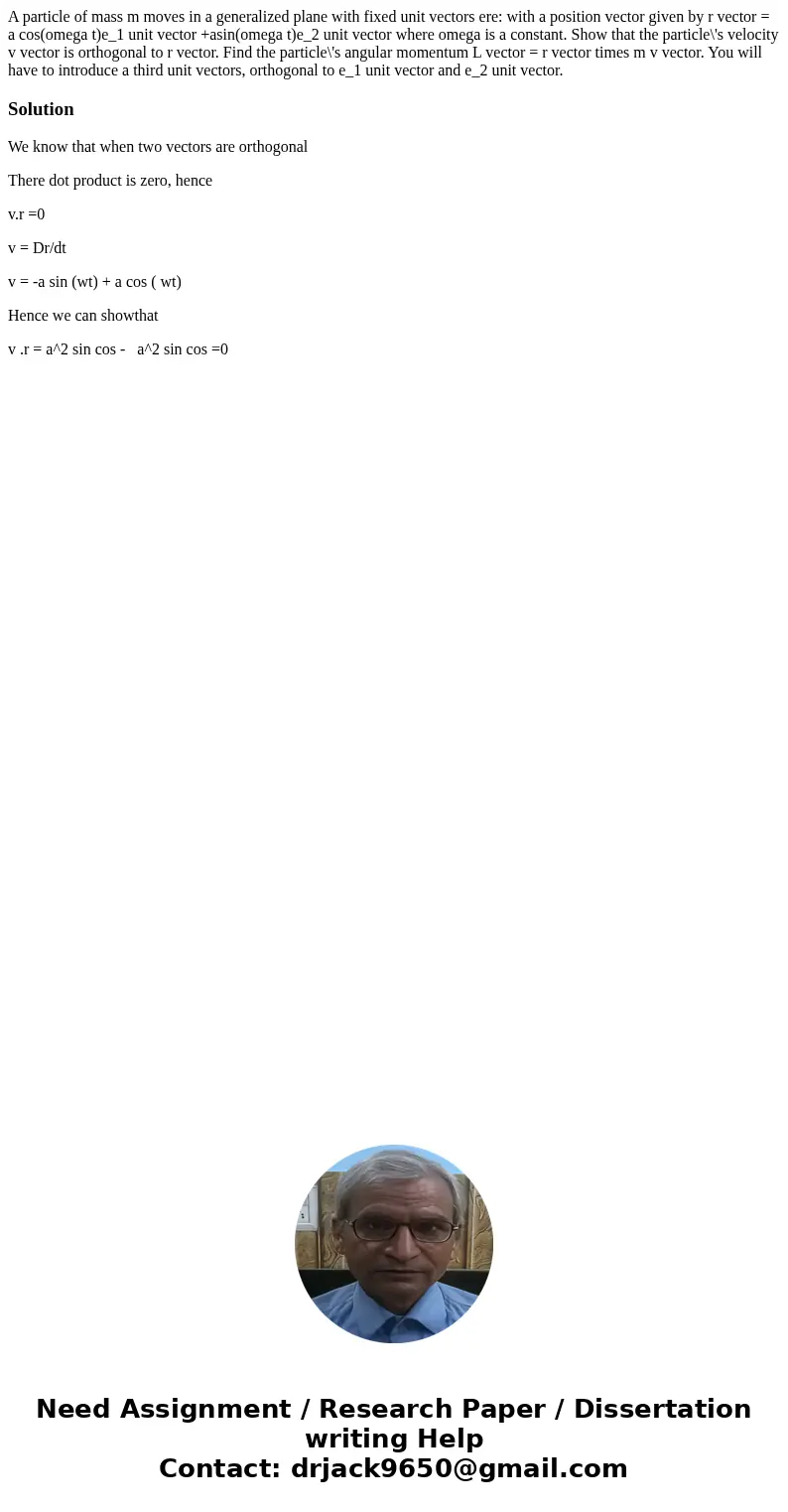A particle of mass m moves in a generalized plane with fixed
A particle of mass m moves in a generalized plane with fixed unit vectors ere: with a position vector given by r vector = a cos(omega t)e_1 unit vector +asin(omega t)e_2 unit vector where omega is a constant. Show that the particle\'s velocity v vector is orthogonal to r vector. Find the particle\'s angular momentum L vector = r vector times m v vector. You will have to introduce a third unit vectors, orthogonal to e_1 unit vector and e_2 unit vector.
Solution
We know that when two vectors are orthogonal
There dot product is zero, hence
v.r =0
v = Dr/dt
v = -a sin (wt) + a cos ( wt)
Hence we can showthat
v .r = a^2 sin cos - a^2 sin cos =0

 Homework Sourse
Homework Sourse